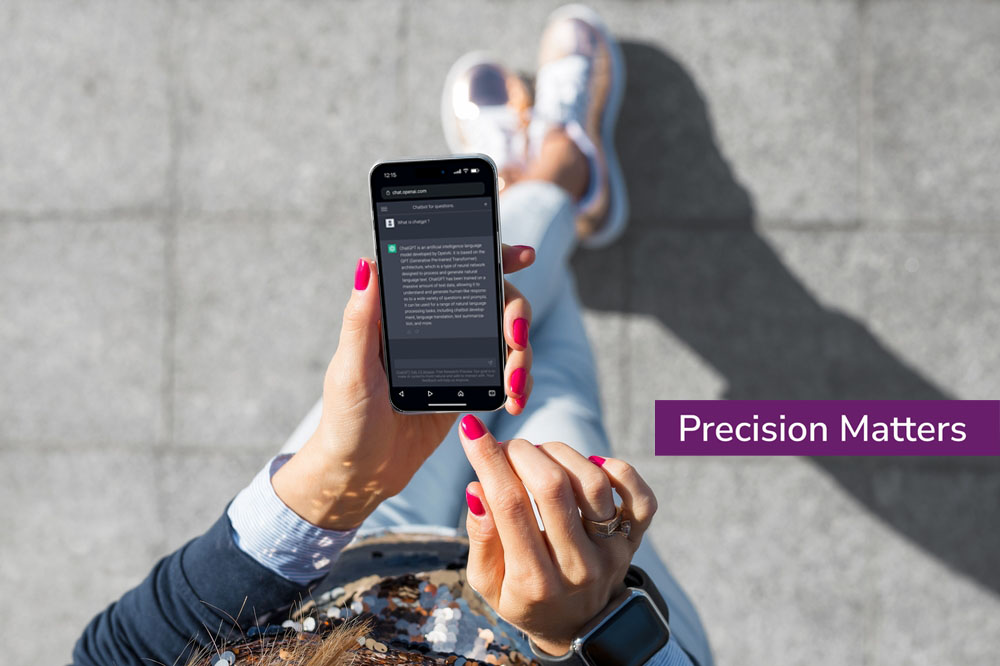
Empathy Skills in the Workplace
Empathy is often thought of as a nice-to-have at work, and not necessarily a must-have. Sadly, there is a big difference between how often we should show empathy in the workplace, and how frequently we actually do. When your employees show one another workplace empathy, the result is greater job satisfaction, motivation, and profitability. The good news is, for both employees and employers, empathy skills can be taught (and not only can be, but should be).
What Is Empathy?
A simple way to understand empathy is by comparing it to sympathy. A sympathetic person is one who cares about another’s feelings and shows them support. An example would be somebody who has never played sports yet shows happiness when their friend wins an athletic contest. The person may have no idea what it feels like to win at sports, yet still “feels for them” because their friend is jubilant.
In contrast, empathy is when a person can closely identify with somebody else’s feelings. For instance, if a friend has a rough day at work, the empathetic person would recall how they feel in the same situation. Such a person is better positioned to “feel with them” and more effectively help their friend through conversation, advice, and action.
But what happens when two coworkers don’t have the same experiences? If a top-level manager has never worked as a production line employee, does that mean it’s impossible for them to display genuine empathy? Of course not, and that’s where empathy skills training comes into play.
Why Is Empathy Important?
A supervisor or employee who does not show empathy at work is not necessarily a bad person; they simply have no obvious commonality with their coworker, and emotionally cannot understand their situation.
But that doesn’t mean there aren’t consequences. Let’s take the example of a wealthy boss who won’t give time off to a single mother with a sick child:
- The employee is frustrated that the boss won’t make exceptions, even in tough circumstances.
- The boss needs to think about firing an unproductive worker, but knows this might be a temporary situation, and that would be a waste.
- Coworkers don’t like to see one of their own suffering, and think that a good boss should be able to come up with a solution.
- HR wants both the boss and all of the employees to stay engaged and productive.
One could easily argue that this is a direct result of the boss’s lack of empathy, which led to his poor decision.
Now think about the opposite situation, if empathy were widely present in the organization. Between coworkers, empathy helps with communication and cooperation. An empathetic boss makes employees feel appreciated, which builds engagement and productivity. When dealing with customers, understanding their point of view is an advantage for service and even explaining your product’s value proposition. The advantages of empathy extend far and wide.
Don’t Underestimate the Power of Empathy
Theodore Roosevelt was the 25th President of the United States, and before that, he was famous for his aggression as a US Army officer. But even Roosevelt said:
“Nobody cares how much you know, until they know how much you care.”
This concept has been adopted by businesses of many types and at many levels. To this end, Businessolver publishes an annual “State of Workplace Empathy” report that looks at how and why the subject is important to organizations. Businessolver explains that many essential HR/business KPIs and leadership soft skill objectives can be addressed by supporting the development of empathy as a critical part of organizational culture. To prove the point:
- 82% of CEOs believe that financial performance is related to empathy.
- 50% of employees feel that an empathic workplace leads to improved job satisfaction.
- 44% of HR professionals connect empathy with higher employee motivation.
Unfortunately, the reality of empathy skills shows that most companies are a long way off from realizing these benefits, with 52% of CEOs and 42% of overall employees stating that their workplace is “toxic”.
The Funny Thing about Empathy
It’s been squarely established that the majority of employees believe that empathy is vital. But we’ve also seen that this soft skill is often absent. So: many people want empathy, but aren’t willing – or able – to express it.
Why the disconnect? It could be because, for certain personalities, empathy in the workplace is seen as weakness. A fascinating comparison is between Steve Jobs, founder of Apple, who was famous for his lack of empathy, and his successor, Tim Cook, who said:
“People will try to convince you that you should keep empathy out of your career. Don’t accept this false premise.”
One reason that there is so much variance between people on the subject of empathy is self-perception. According to Businessolver, 69% of CEOs struggle with empathy because they fear losing the respect of their employees.
Society and Empathy
So, unlike many workplace soft skills, there is a perception of a potential downside to being empathetic. Nobody is ever afraid of being a top-level communicator, but consistently showing empathy is something that many workers seem to avoid.
Some of this attitude stems from the current conditions of Western society. According to an interview by McKinsey, the average empathy levels of US college students today are lower than those felt by 75% of college students 30 years ago. Social media might play a role in this decline, but whatever the reason, the trend is disturbing.
Measuring Workplace Empathy
On the other hand, people tend to appear more empathetic than they feel they are. The same article by McKinsey states that, when a person rates their own level of empathy, they tend to consistently underestimate how empathetic they seem to others. So a starting point for your investigation of workplace empathy levels is to make people feel positive about their skills (which is empathetic in itself!).
There are many methods that you can apply to understanding your company’s general attitude towards empathy, as well as individual employees’ levels:
Skills Gap Analysis
The usual method of deciding what skills are present or absent in your organization is to interview managers, look at an organizational chart, and other steps. But HR can make sure to include empathy (as well as other valuable soft skills) as a way to include it in the “programs” phase of a skills gap analysis.
Surveys and Interviews
HR uses a variety of tools to get a picture of their organization in terms of skills, morale, leadership, and other KPIs. Interestingly, empathy is part of all of these factors. Some survey tools should be used on a regular basis, and others only occasionally. They include:
- Pulse surveys
- Manager interviews
- Employee feedback forms
- Discussions that occur during yearly HR reviews, exit interviews, and performance reviews
Professional Services
Some business consulting organizations will perform an assessment of the quality and quantity of empathy skills in your workplace. One such service is CliftonStrenghts by Gallup, which has a specific module for this. But beyond empathy, the CliftonStrengths program evaluates 34 different leadership soft skills in order to gauge a company’s talent levels.
If You Could Do One Thing to Increase Empathy…
A critical move for increasing empathy skills in your company is to implement learning and development courses (see below). However, there is one organization-wide change that will boost this vital soft skill–guaranteed.
A famous psychology study held at Princeton University in 1973 examined the concept of empathy. Students in religious programs were asked to deliver a speech about the concept of the Good Samaritan, as the original speaker was apparently sick. One group of students was told that they have time before their presentation needed to start, and the other group was asked to hurry. Along the way to the lecture hall, they encountered a man (actually a participant) who was sick and needed help. 63% of those who had “time to spare” helped the man, while only 10% of the students under time pressure did the same.
The moral of the story is that time is a critical factor that influences how much we are willing to help others. In any company, training employees in time management skills, and organizing their schedules so that they are not under relentless pressure, will give them space in their day for supporting their peers.
How to Be More Empathetic
Obviously, something happened to Apple between the reign of Steve Jobs and that of Tim Cook. Like most organizations, employees follow their leaders, and Tim Cook made it clear that empathy is an important part of the way he manages the company. That’s probably at least one of the reasons why Apple’s “three F” recipe for customer service success is based on empathy.
If Apple can learn empathy, then so can most people. Like any soft skill, it’s possible to learn empathy skills through L&D programs. But, as is the case with empathy and interpersonal skills in general, this is a deeply personal journey. Everyone has their particular biases and emotional blind spots.
For this reason, coaching is the answer for how to develop empathy skills. Empathy skills can be broken down into numerous soft skills training and related programs, as shown below. With the ingrained attitudes that tend to accompany a lack of empathy, it’s the close supervision of a coach that can make all the difference.
Communication Skills
Job number one in developing empathy is to understand others, and that means communication. One issue that is often mentioned by employees who feel a lack of empathy is that others “fail to read the room,” meaning an ability to read visual communication clues such as body language and facial expressions.
It’s important for an empathetic coworker to listen, hold judgment, and be patient. But it’s just as essential for a person to make their situation and needs understood. That tends to be gained through self-management skills like mindfulness. For managers, posing questions is always vital, particularly when asking “how can I help?”
Supporting Soft Skills
Behind good communication skills are other abilities that contribute heavily to strengthening empathetic feelings. Plus, they all tend to make a great basis for leadership development programs. Active listening allows you to understand what other employees are going through, while emotional intelligence enables you to compare your situation to that of others and feel (at least) sympathetic towards them. Other skills of note are open-mindedness and self-awareness.
Role Reversal
A close translation of “empathy” is “standing in somebody else’s shoes.” It might not be possible to comprehend everybody’s emotional reactions to every circumstance. But being in their position, even if only for a short while, can come close.
Luckily, many organizations are set up for employees at all levels to experience the working life of other people in the hierarchy. Here are some examples:
- Job rotation, where employees take on different roles in their department, while managers can move between organizational levels, and even work “on the floor”
- HR-sponsored workshops where employees discuss productivity and engagement issues
- Job shadowing, where an employee accompanies a coworker or manager throughout their day
- Reverse mentoring programs, where lower-level workers provide recommendations to managers
Leadership and Followership
After hearing somebody’s point of view, and sharing their experiences, the next part of empathetic behavior is to act. To develop the skills and the attitude that best support coworkers, both leadership and followership come into play:
Adaptability – When a coworker is in need, things need to change. Being able to accommodate their wishes while maintaining healthy productivity is a matter of changing according to circumstances.
Creative Thinking – If solutions to employee problems were simple, then most managers could handle these situations. But, most often, building solutions for a complicated situation requires creative thinking in the style of an adaptive leader.
Problem Solving – Once some ideas are on the table, it’s time to boil them down to the most effective choices. Problem-solving skills enable a logical method of arriving at the best recommendations.
A Step Beyond Empathy
According to the Harvard Business Review, empathetic leadership is not enough. Empathy is great for understanding somebody’s feelings, but then what? Truly effective leadership skills must also involve taking action to resolve the difficulties that an employee is having. In a word, this means “compassion”.
By showing compassion, leaders can build loyalty while enhancing job satisfaction, retention, and organizational culture. But what’s in it for them? The HBR article mentions research showing how a leadership style based on compassion is good for leaders as well, with “generous and agreeable” leaders beating out “selfish, aggressive, and manipulative” people for senior roles. But the trick is to be authentic in your compassion, because helping others only to help yourself doesn’t work in the long term.
Famous Examples of Empathy
Many major corporations are taking empathy seriously. They have created impressive programs that show that they understand the personal and workplace challenges that their employees face. Here are a few examples of inspiring programs that are creating benefits for both workers and their employers:
- Facebook, the social media giant, has implemented a flextime program that enables employees to work from home about half of the time. This allows employees to easily coordinate personal affairs with their professional duties, leading to increased engagement and productivity.
- Mercedes-Benz, the car manufacturer, saw a connection between customer satisfaction and employee attitudes – and realized that many of its employees had never even driven one of their cars! Mercedes created its “Get In!” program so that employees could take a car for a spin, which allowed them greater understanding of customers’ likes and dislikes.
- Southwest is a major US airline. Through its Corporate Responsibility Programs, the company provides financial support to employees who have experienced severe hardships in their lives, such as natural disasters, family crises, and major property loss.
- Google, the world’s leading search engine, allows new mothers to receive two years of paid leave, and supporting fathers to spend 18 weeks at home. We can expect the “empathy” label to get even more use at Google due to CEO Sundar Pichai’s empathetic approach to leadership.
Emphasize Empathy Skills with the Growthspace Platform
Growthspace’s precision skill development program matches employees with the right coaches to help them develop empathy skills, regardless of the number of employees or their level in the hierarchy. Such critical L&D programs give employees the most effective and convenient talent development experiences so that they can reap the many benefits of a more empathetic workplace.


